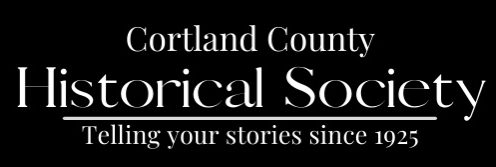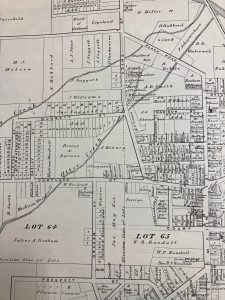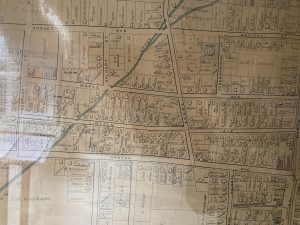Madison Street was also called Suggett Avenue, or at least part of the street was. From previous research into Woodruff Street, I had discovered that Madison Street was named for U.S. President James Madison. Madison was the namesake of Madison Woodruff and a friend of Woodruff’s father. Looking at maps of Cortland, we find that Suggett Avenue and Madison Street existed by 1876 but were not connected to each other. Property in between the two streets was owned by J.A. Schermerhorn and E.F. Simons. Schermerhorn died in 1879, and I could not find an obituary for E.F. Simons, but both of those lots must have been available for the street to be extended by the 1888 map because by that time, Suggett Avenue ran from Gazlay Avenue (Hamlin Street) to Adams Street (Homer Avenue) and Madison Street ran from Adams Street to North Main Street. Both the 1876 atlas and the 1888 map of Cortland show that James Suggett owned a large amount of property in various locations throughout the city, including land that is now Suggett Park. But who was James Suggett?
James and Jane Suggett immigrated to America from England in 1851. Their ship in New York City on May 29, and their first surviving child, a daughter named Rosanna, was born just three weeks later. The Suggetts had four children who lived to adulthood: Rosanna, John, Cora and Flora (twins). The Suggett family settled in Cortland, perhaps to be near other immigrants from Yorkshire, where they hailed from.
In England, James Suggett had been apprenticed to a weaver as a child, but he abandoned weaving and worked as a laborer in the United States. He worked hard at many things, including digging wells. In 1861, the 76th Regiment was training at the fairgrounds in Cortland, and a small group of men were working to devise a closed well. They came up with something that worked, but James (who was part of the group) continued to improve the design on his own. In 1862, he made some improvements that made a huge difference in the functionality of the well and he applied for a patent on March 29, 1864. People in Cortland paid a $25 fee for one of his wells. There was considerable litigation over the driven well, and it is a complex topic, but in the end, Suggett’s improvements were recognized, and he was able to sell territorial patent rights.
In 1865, he made $30,000 (worth $522,176 today). In the years from 1865-1868, Suggett’s income was over $50,000 a year. He used his money to acquire land which was later sold for a great profit. There was also a construction company which was in his wife Jane’s name which built houses on the land James owned. (This was a very unusual practice at that time since women did not typically own property or run businesses.) The lots were divided into ½ acre or less lots and sold with a home ready to move into. Were they the first housing developments in Cortland? Perhaps! The Suggetts had a team of laborers who built these homes; brother-in-law Thomas Ellsworth was a carpenter, Robert Dalton was a mason, and a fellow with the surname Merrick painted and papered the finished homes. Houses sold for $300-$1200 each.
Though the James Suggett family line died out with the death of his great-grandson, John Chester Birdlebough, the Suggetts left a lasting impact in Cortland. To learn more about how son John Suggett’s forward thinking helped keep SUNY Cortland in the community after a devastating fire at the Cortland Normal School in 1919, check out a longer story on our website: https://cortlandhistory.org/suggetts.
What do you think: should some of the original street names have been changed to honor presidents or should the names been kept to honor local notable citizens? ~Tabitha


